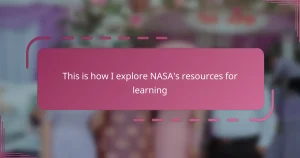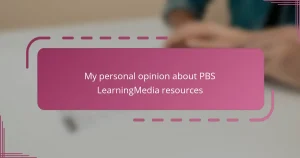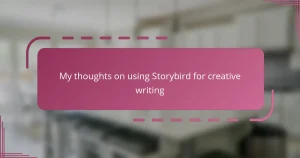Key takeaways
- National Geographic Kids science projects enhance learning by making complex concepts accessible and exciting through hands-on exploration.
- Science projects foster critical thinking, problem-solving skills, and build confidence in children, creating lasting positive attitudes toward learning.
- Selecting age-appropriate activities is crucial for maintaining engagement and ensuring that children feel empowered to succeed.
- Encouraging open-ended questions and relating projects to everyday life can deepen curiosity and sustain interest in scientific exploration beyond the initial activity.
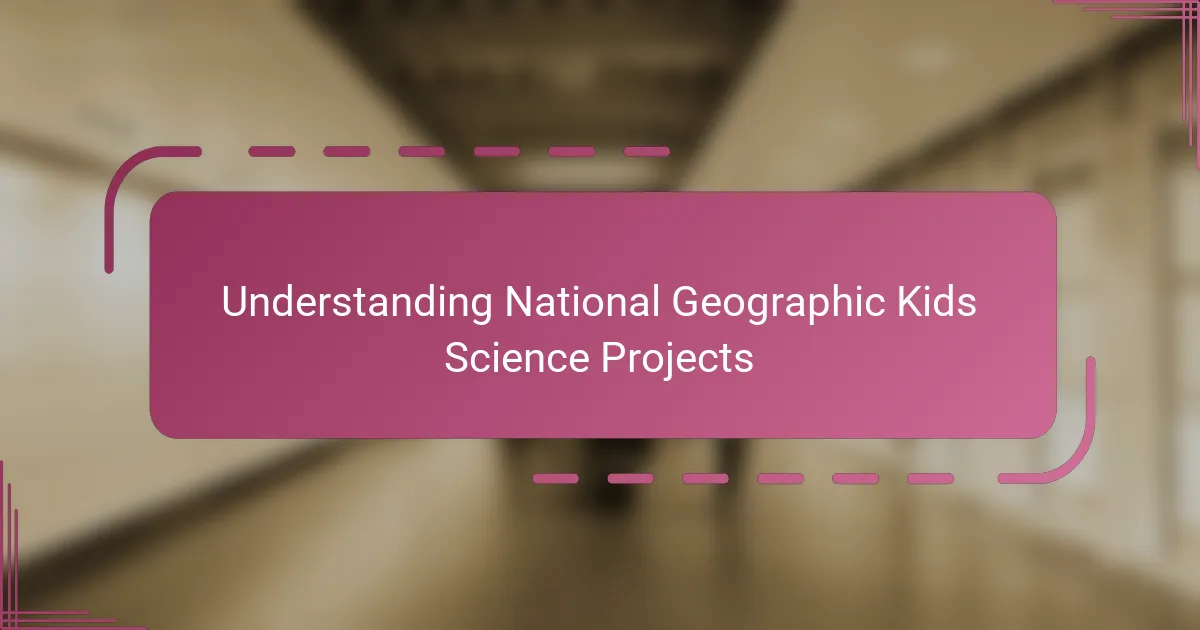
Understanding National Geographic Kids Science Projects
National Geographic Kids science projects are designed to spark curiosity and make learning hands-on and fun. When I first encountered these projects, I was surprised by how they made complex scientific ideas so accessible for children. Have you ever noticed how kids light up when they get to explore nature or conduct simple experiments? That’s exactly the feeling these projects aim to create.
What I appreciate most is the way these projects connect real-world science with everyday experiences. For instance, we once did a project on animal tracking that turned a simple walk in the park into an exciting detective hunt. This approach not only deepens understanding but also builds a genuine excitement for learning.
I often wonder if more science could be taught this way—through exploration and discovery rather than just facts and figures. National Geographic Kids projects remind me that science isn’t just a subject; it’s an adventure waiting to happen right outside our door.
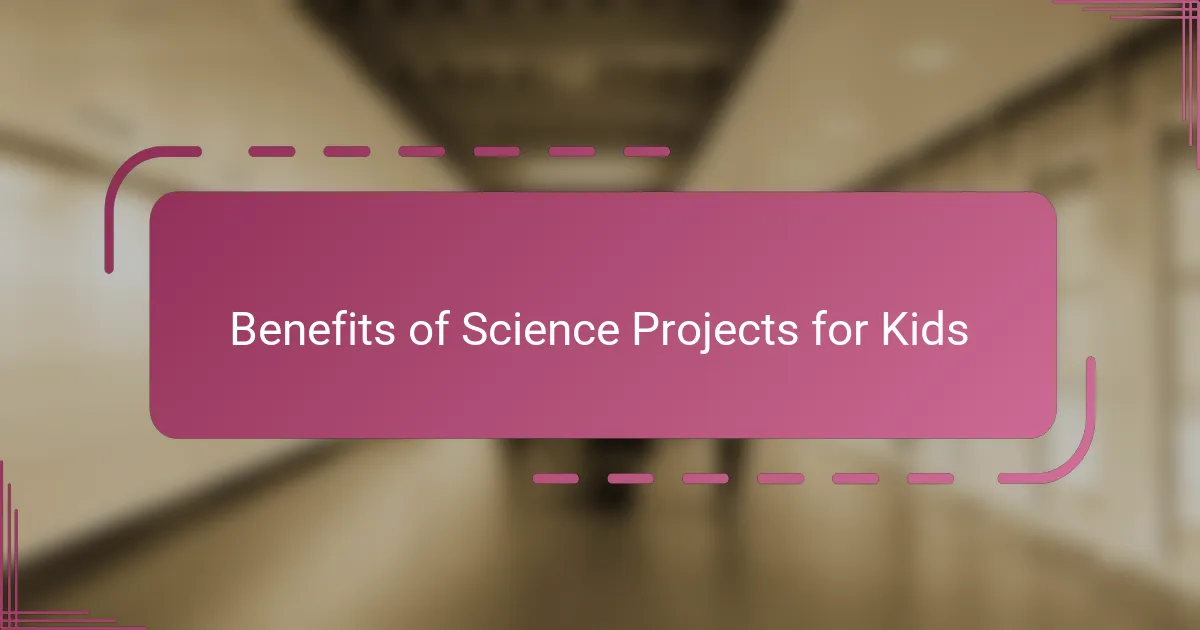
Benefits of Science Projects for Kids
Science projects offer so much more than just knowledge; they ignite a child’s natural curiosity. When my kids dive into these activities, I see their eyes sparkle with excitement as they make discoveries on their own. Isn’t that the best way to learn—by doing and exploring rather than just listening?
Beyond sparking curiosity, these projects also nurture critical thinking and problem-solving skills. I’ve noticed how my children start asking “why” and “how” questions more often, eager to understand the world around them. It’s rewarding to watch them piece together clues and come up with their own explanations.
Most importantly, science projects create lasting memories and a positive attitude toward learning. I remember the pride my daughter felt after completing a simple experiment, which made me realize how empowering hands-on science can be. Don’t we all want our kids to feel confident and excited about discovering new things?
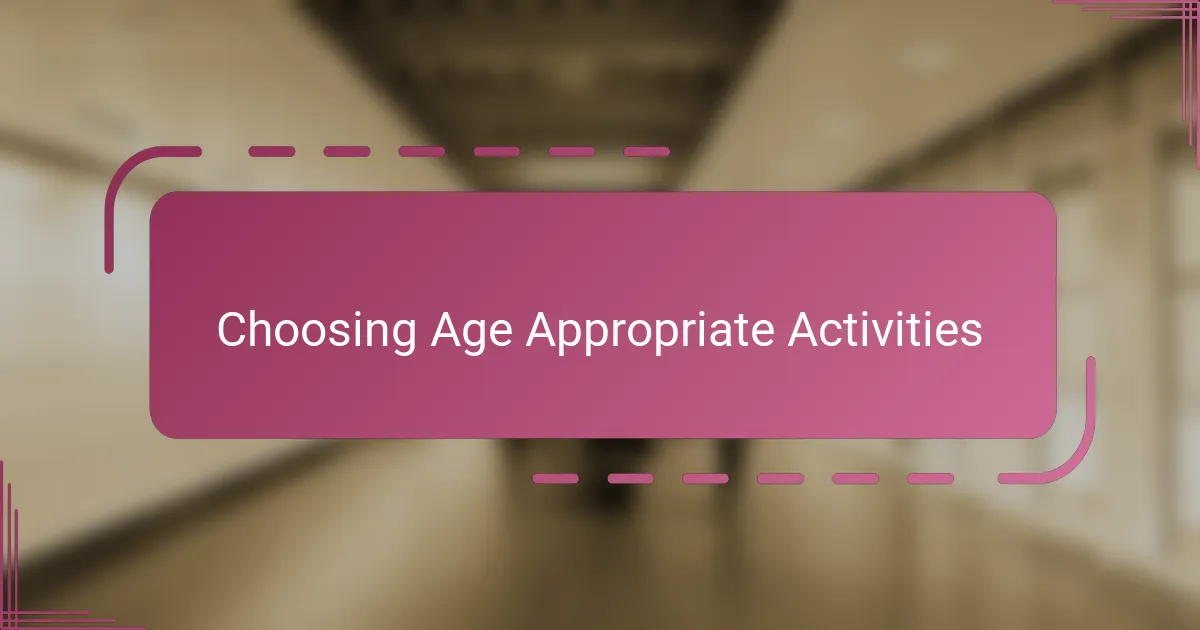
Choosing Age Appropriate Activities
Choosing age-appropriate activities is something I’ve learned to prioritize after a few trial-and-error attempts with my kids. At first, I picked projects that seemed fun but turned out to be too complex, which left them frustrated rather than excited. Have you ever seen a child’s enthusiasm fade because the task just didn’t match their abilities? It’s tough—and that’s why matching the activity to their developmental stage matters so much.
I also noticed that when the projects fit their age and interests, my children not only stay engaged but also build confidence. For example, a simple nature scavenger hunt was perfect for my younger child, while my older one thrived on more detailed experiments about plant growth. Seeing them succeed at their own level made me realize how crucial it is to tailor each project carefully.
Choosing the right activities means looking beyond just the topic and thinking about what skills and information the child can realistically grasp and enjoy. It’s a balancing act: challenging enough to spark curiosity but not so hard that it becomes discouraging. After all, isn’t fostering a love for science the main goal? I truly believe that careful selection sets the stage for those “aha” moments kids remember for life.
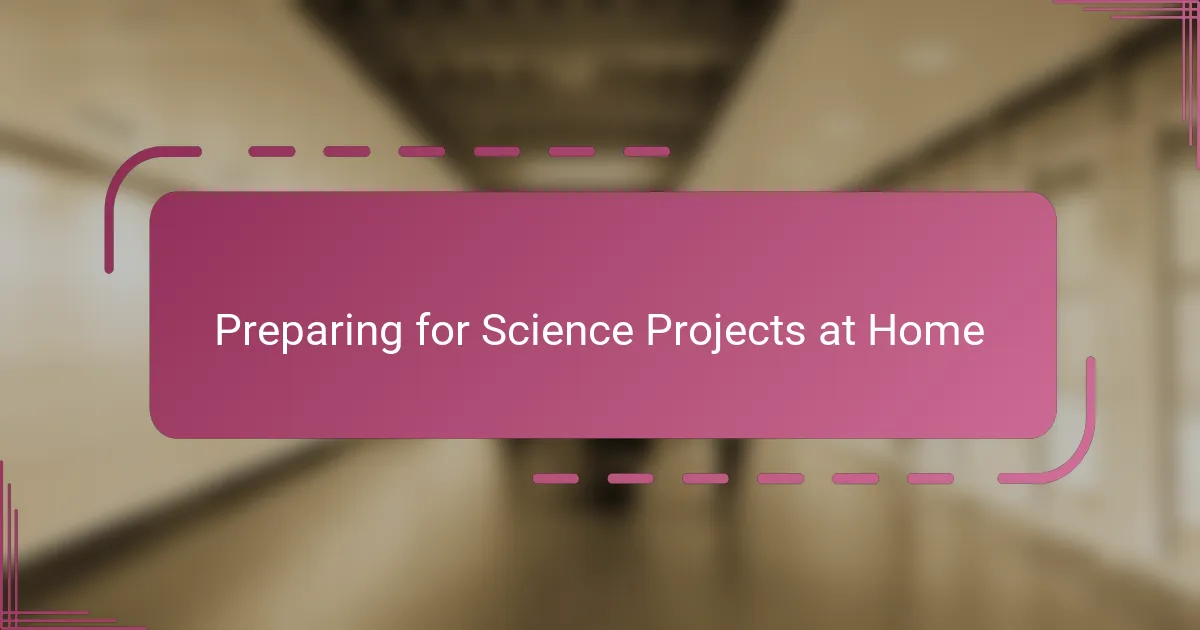
Preparing for Science Projects at Home
Getting ready for science projects at home can be a bit of an adventure in itself. I’ve found that gathering all the materials and setting up a dedicated workspace really helps keep things organized—and it takes away the stress when my kids are eager to start. Have you ever seen how a clutter-free table can suddenly make little hands more confident and focused?
One thing I always do before we dive in is skim through the instructions together. Sometimes, I catch a step that might be tricky, and that’s a perfect chance to explain it in simple terms. It turns preparation into a little warm-up, so the actual experiment feels more like fun than work.
I also like to chat with my kids about safety, especially when things involve mixing or using tools. That moment feels important—not just to keep them safe but to show them that science is serious but exciting. It reminds me how much preparation really means setting the tone for a positive and memorable experience.
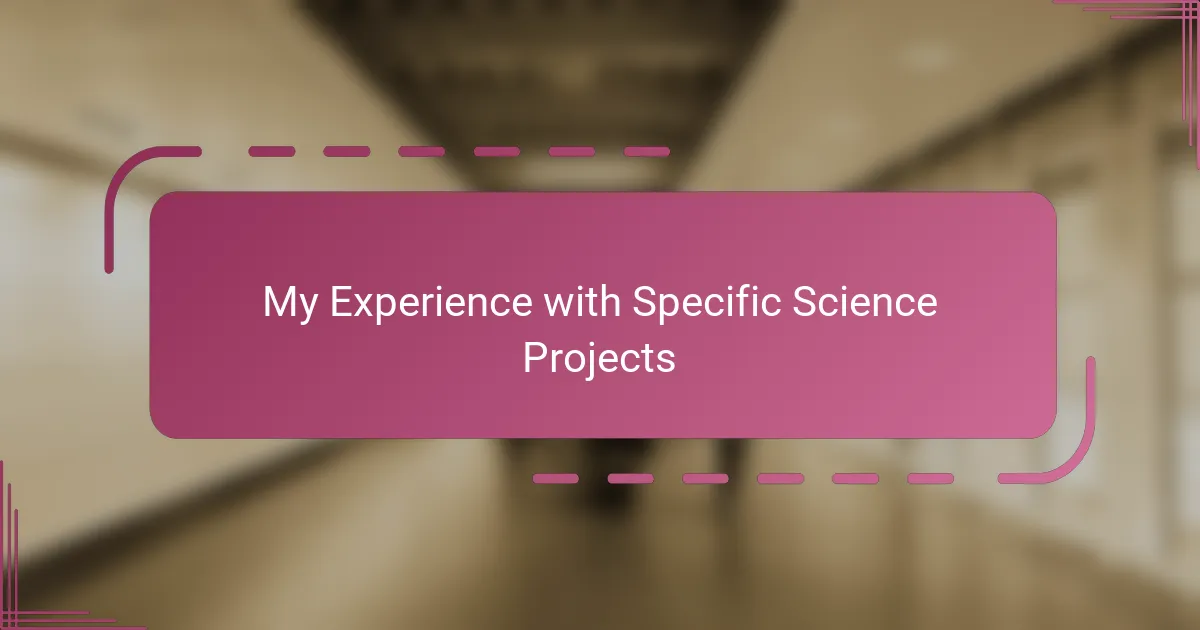
My Experience with Specific Science Projects
One project that stands out in my memory is the seed germination experiment. Watching my kids’ expressions as tiny sprouts emerged from cotton balls was pure magic. Have you ever seen pure wonder captured in such a simple moment? It reminded me how even the smallest hands-on activity can ignite a profound connection with nature.
Another time, we tried building a simple circuit to light up a tiny bulb. At first, the complexity seemed daunting, but seeing their determination and eventual success filled me with pride. Isn’t it amazing how a bit of challenge can turn into such a powerful confidence boost for children?
I’ve also loved the bug observation project, which turned our backyard into a miniature safari. The way my children excitedly identified different insects with their magnifying glasses was infectious. It made me realize how these projects don’t just teach science—they cultivate curiosity and respect for the natural world in a way no textbook ever could.
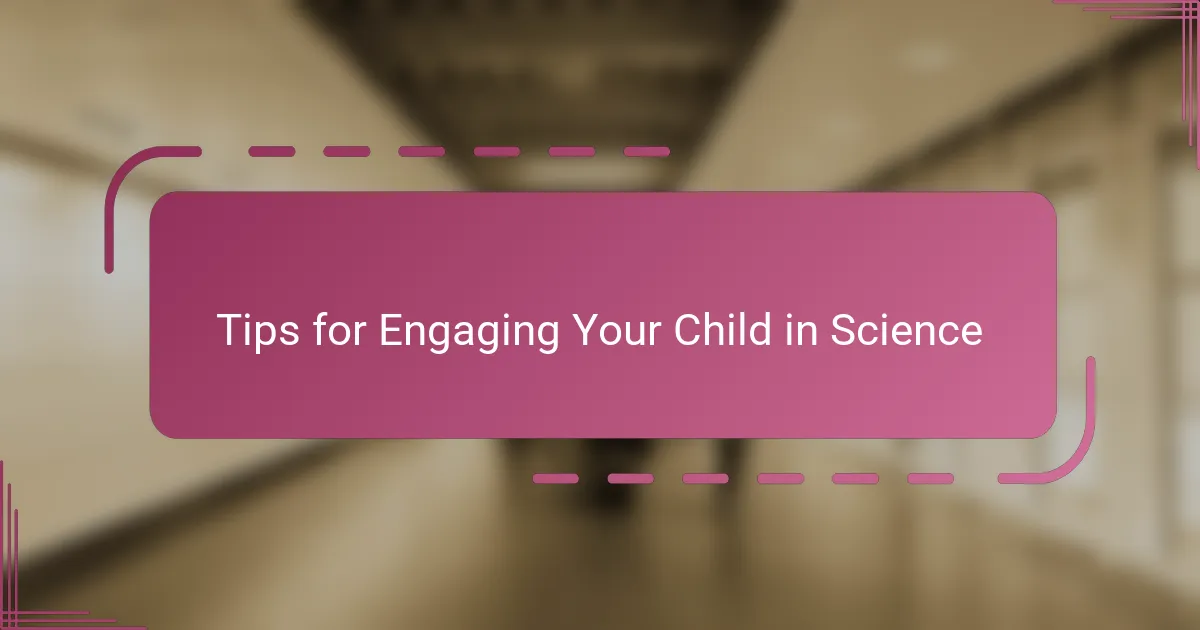
Tips for Engaging Your Child in Science
Keeping your child’s natural curiosity alive is key to engagement—so I try to ask open-ended questions like “What do you think will happen if…?” This simple nudge often sparks a conversation that leads deeper into the science behind the activity. Have you noticed how kids love to share their guesses and feel proud when they’re part of the discovery process?
I’ve found that mixing up the activities keeps things fresh and exciting. Sometimes we do experiments inside, other times we explore outside, like tracking bugs or observing plants. Changing the setting seems to fuel their enthusiasm and shows how science is all around us, not just inside a classroom or book.
Most importantly, I remind myself to be patient and celebrate the small wins. When my child first struggled with a project but kept trying, their joy upon succeeding taught me that encouragement means more than perfection. Isn’t nurturing that persistence what really builds a lifelong love for science?
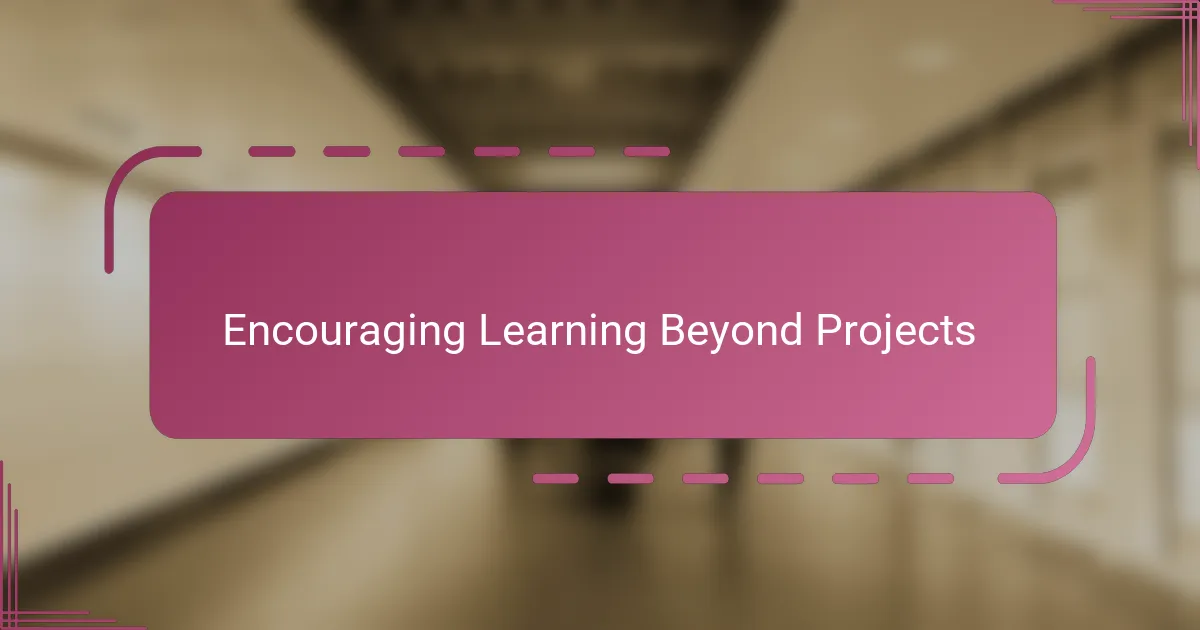
Encouraging Learning Beyond Projects
Encouraging learning beyond the projects is something I’ve come to value deeply. After finishing a National Geographic Kids science activity, I like to keep the conversation going by asking my kids what else they’re curious about. Have you ever seen how a simple question turns into a whole new adventure of exploration? That’s when the real magic happens—when learning becomes continuous, not just a one-time event.
I also try to connect the project themes to everyday life. For example, after a bug observation project, we might spend time noticing insects in our garden or even read stories about their roles in nature. I’ve noticed that this approach helps my children see science not as something confined to a worksheet but as a living, breathing part of the world around them. Isn’t it wonderful when learning feels relevant and ongoing?
Sometimes, I encourage my kids to come up with their own mini-experiments based on what we’ve done. Watching them design their own little projects reminds me how powerful autonomy is in learning. When my daughter decided to test different types of soil for her plant experiment, I realized she was thinking like a real scientist—and that enthusiasm is what we all strive for as parents and educators.
